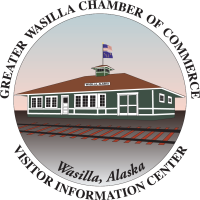Greater Wasilla Area Attractions
There is so much to see, and even more to do in the Greater Wasilla area. Be sure to check out these local events and attractions during your visit to Wasilla! Learn more about each through the links below:
Dorothy Page Museum
The Dorothy Page Museum is the City of Wasilla’s first museum. In 1931, the building the museum now resides in was built as a community hall. Prior to the founding of the museum, the building was used for social gatherings and community functions.
30 years later, the building had deteriorated into a state that was no longer suitable for a community hall, and in 1967, the city renovated the building and funded the Dorothy Page Museum.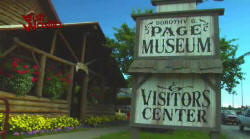
The Dorothy Page Museum set about gathering and preserving the artifacts and historic items of Wasilla’s past. The assortment of Wasilla artifacts stored at the Dorothy Page Museum represents the largest collection in the region.
Through exhibits, programs, and lectures, the Dorothy Page Museum shares Wasilla’s history with all who are interested.
In addition, the Dorothy Page Museum owns Wasilla’s first school. Both the museum and the school are National Historic Landmarks that are located in the Historic Town Site of Wasilla. These buildings represent part of the history of the first Wasilla pioneers and are preserved to show the architectural and social development of Wasilla.
Come visit, learn about the early pioneers, and see their story told through objects of the past.
The Railroad

The Alaska Railroad has played a crucial factor in Wasilla’s history. Wasilla sprang up as a trading hub and supply center when the railroad was built through the area, connecting the coast to the interior.
Today, the railroad not only serves as a means of transportation, but also as a way to experience and enjoy the state of Alaska. The passenger train stops right in the heart of Wasilla and connects to Anchorage and Fairbanks. In 1903 the first railroad in Alaska was built by Alaska Central Railway.
It began in Seward and extended 50 miles north. Since then, the Alaska Central Railway has gone out of business and The Alaska Railroad Corporation is now running and maintaining the railroad. They are continually improving quality of travel, becoming more efficient, and expanding service by opening more stations and operating more routes across the state.
The Alaska Railroad is the perfect way to travel to all areas of Alaska. From Denali National Park, to Seward, Fairbanks, the Arctic Circle, and everything in between, the Alaska Railroad offers a relaxing, scenic ride through mountains, along rivers, and across tundra.
Coordinating with cruise lines, fishing charters, and lodges, they have unlimited arrangements of tours available. For a great way to see what Alaska has to offer, make a reservation today.
Iditarod Race

Wasilla is home to the Iditarod Headquarters, which features a museum, gift shop, sled dog rides, and video viewings. Here you can learn the history of the Iditarod, view trophies and photographs, meet some sled dogs, and even take a ride with them down the trail.
Experience the Iditarod by viewing the videos of actual footage along the Iditarod trail. Located at mile 2.2 of the Knik Goose Bay Rd, the Iditarod Headquarters is a great way to learn about a race over 1,150 miles long.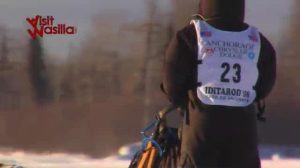
The Iditarod trail played numerous roles throughout history, beginning as a supply route and ending as a race of endurance and strength. The Iditarod trail began as a mail run in which mail and supplies for the mining communities in the Interior and Western coastal areas went in from the major ports of Seward and Knik.
In 1925, the idea of a race was born, when a diphtheria outbreak in Nome called for a race against time. The serum was transported to Nome by dogsled, and today mushers and dogs still run that same historic trail as a test of vigor and stamina.
The Last Great Race on Earth
Today the ceremonial start of the Iditarod begins in Anchorage and from there the dogs run to Eagle River. The official restart then takes place in Willow to mark the beginning of the long trek towards Nome.
Ophir, the 13th checkpoint, signifies a split in the trail. Mushers take the northern route going through Cripple, Ruby, Galena, and Nulato during the even numbered years and the southern route going through Iditarod, Shageluk, Anvik, Grayling, and Eagle Island during the odd numbered years.
Kaltag marks the point where these two different routes meet back up and continue their journey to Nome.
The Official Iditarod Race Restart occurs over the first weekend in March and typically lasts 10 -17 days. It is a time of excitement and involvement in rural communities, stimulates learning and economic growth, and involves thousands of volunteers all over the state. Come and be a part of Alaska’s culture and history.
Visit the headquarters, attend the ceremonial start, camp on the trail to cheer on the mushers, or fly to Nome to see the grand finish. Make your Alaskan experience complete by attending “The Last Great Race on Earth.”
Iron Dog

The Iron Dog, a race of fortitude and strength, is only for the toughest snowmobilers. Each year teams of competitors rev up their engines at the start of this 1,971 mile trek across Alaska.
From Wasilla to Nome,  and then on to Fairbanks> Teams of two ride their snowmobiles across the vast tundra, cross swift rivers, and climb immense mountains before they reach their way to the finish line. This race is like no other. It pushes the contestants to the limit and determines who has what it takes to be an Iron Dog champion.
and then on to Fairbanks> Teams of two ride their snowmobiles across the vast tundra, cross swift rivers, and climb immense mountains before they reach their way to the finish line. This race is like no other. It pushes the contestants to the limit and determines who has what it takes to be an Iron Dog champion.
The Iron Dog began in 1984 and now has two classes of competitors: Recreational Class, and the Pro-Class. In 1997, the first Pro Class Women’s team participated. They scratched at Nome, but since then, women’s teams continue to participate and finish.
Watch the start of the race on Big Lake, just outside of Wasilla. Cheer on competitors as they begin their journey into the great Alaskan wilderness. Volunteer to help the racers find their way, from one end of Alaska to the other.
Be a part of this truly Alaskan experience and “The World’s Longest, Toughest, Snowmobile Race.”
Independence Mine

Nestled within Talkeetna Mountain peaks surrounding Hatcher’s Pass, Independence Mine represents a different era in Alaska’s History.
Gold brought thousands of pioneers to the wilderness of Alaska to mine and pan for this valuable resource. Independence Mine, once a bustling district of activity, has been preserved in order for the public to view the remains of this small mining town.
Tours of the mines, houses, and schools are available to see into life in a mining camp.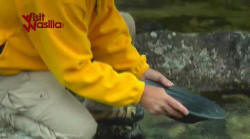 Gold was discovered in the rivers of the Willow Creek Valley in 1886, but the first claim to mines did not appear until 1906 when Robert Lee Hatcher discovered and claimed the first lode gold mine.
Gold was discovered in the rivers of the Willow Creek Valley in 1886, but the first claim to mines did not appear until 1906 when Robert Lee Hatcher discovered and claimed the first lode gold mine.
Independence Mine was formed when two mines, The Alaska Free Gold Mine on Skyscraper Mountain and Independence Mine on Granite Mountain, were bought by the Alaska-Pacific Consolidated Mining Company (APC) in 1938.
APC then became the largest mining manufacturer in the Willow Creek Mining District, holding 83 mining claims spread over a 1,350 acre area. In 1941, Independence Mine was at the height of it operating, but in 1943, a wartime ban ordered the close of the mine.
Although the ban was lifted in 1946, gold mining in Independence Mine was never able to fully recover to the state it had once achieved and in 1951 the mine closed after extracting nearly $6 million in gold. Today, Independence Mine State Historical Park offers a wide variety of activities for you to enjoy.
Learn about the life of miners and mining techniques in the museum, take an independent or guided tour of the camp, or pan for gold in one of the many streams and rivers flowing through the area.
Hike up to one of the mining shafts and look down upon the Matanuska Valley. Independence Mine is a fun, educational destination and presents an opportunity to take a glimpse into the past.
Knik Museum

The Knik Museum represents a major part of Alaska’s History. Located in one of the only two remaining buildings of the Knik historic town site, the museum holds a collection of artifacts from the Alaska Gold Rush era.
Clothing, furniture, tools, and much, much more from the early Knik town are on display on the first floor of the Museum. Knik’s central location near the ocean made it acceptable as a trading hub and supplier for the South-central Alaska interior.
The second floor of the museum is home to the Sled Dog Musher’s Hall of Fame, which honors famous dogs and mushers who have contributed to sled dog racing and travel. Knik eventually came to be known as the “Dog Mushing Center of the World” and remains a checkpoint on the Iditarod Trail.
This pre-Anchorage town buzzed with activity at its height but gradually became a ghost town due to the development of Anchorage and Wasilla. Operated by the Wasilla-Knik-Willow Creek Historical Society, The Knik Museum offers a glimpse into history.
The surrounding area corresponds with the museum, as it exemplifies natural and historical terrain, untouched from the past.
Matanuska Glacier

Become immersed in the great Alaska outdoors at Matanuska Glacier, the largest glacier in the state accessible by car. Twenty-four miles long and four miles wide, the Matanuska Glacier descends 12 thousand feet and is situated within the Chugiak Mountain Range.
Photograph the stunning scenery as you walk across a river of ice, constantly transforming and adjusting to the landscape.
Go on your own or schedule a hike with a guide to explore all this glacier has to offer. Crevasses, pools, ice formations, and hidden lakes are all found within the spectacular backdrop of the Chugach Mountains.
After just a 15-20 minute hike from your car, find yourself standing on the mighty glacier itself. For more adventure, camping and ice climbing services are available.
Be sure to bring warm clothes and plenty of film to prepare for exposure to the extreme weather conditions of Alaska in some of the most breathtaking surroundings on the planet. Matanuska Glacier is located about an hour outside of Palmer and is a must-see destination for locals and tourists alike.
Transportation Museum

The Museum of Alaska Transportation and Industry (MATI) was created to display and collect the machinery left over from the bursts of growth in Alaska’s economy.
Resources discovered meant that railroads had to be built, aircrafts had to be assembled, and roads had to be cleared for the development to continue. After the resources were exhausted, the machinery used remained in the forest and tundra due to the high costs of transportation for removal of the equipment, while the workers moved out.
MATI has gathered those machines left to rust and preserved them to educate the public and present an educational, historical account of the history of transportation and industry in Alaska and the people of the era.
A complete timeline of artifacts shows the progress that has been made through Alaska’s history.
MATI is a unique facility dedicated to preserving Alaska’s past. From airplanes, to trains, tractors, and cars, this museum has it all.
Come visit and view the exhibits of early workers, whether agricultural, industrial, or economical. See the development that has brought Alaska into the modern era.
Musk Ox Farm

Right off the Parks highway just outside Palmer, AK, the Musk Ox Farm provides a cultural destination for the whole family to enjoy.
Home to one of the Arctic’s oldest living species, the Musk Ox Farm focuses on the growth and domestication of the musk ox. Come and take a guided tour of the farm and see bulls, cows, and newborn calves.
These musk oxen provide further substance income to Native families living in rural Alaska, and have been since 1954 when the Musk Ox Project began. Qiviut, the fine under-wool of the musk ox, is gathered and delivered to a Native knitter’s cooperation called Oomingmak, and then distributed to knitters throughout Alaska.
The knitters make scarves, nachaqs (Eskimo smoke rings) and caps with the traditional knitting patterns unique to each village.
The tour of the farm includes a viewing of the musk ox at close range and a tour of the museum, which displays the history of the musk ox, from the ice age to the development of domestication on the farm.
Learn about the knitting of the qiviut and see the distinct patterns from the different Native villages, as well as feel the fine clothing made from it. The Musk Ox Farm is a great destination, and truly represents a part of Alaska’s history.
Parks, Rivers & Lakes

Wasilla offers a wide variety of outdoor recreation sites. Paddle down a canoe trail beginning at Finger Lake and ending at Wasilla Lake.
This seven mile journey winds its way along Cottonwood creek from Finger Lake, to Cottonwood Lake, Mud Lake and finally to Wasilla Lake.
Wasilla Lake features Newcomb Park, complete with playground equipment, benches, and picnic tables. Memory Lake presents a quiet place to kayak or canoe and is closed to motorized crafts.Finger Lake Recreation Site and Lake Lucille are close, popular destinations open to motor boats, jet skis, canoes, and swimmers alike.
Nancy Lake Recreation Site is home to a 12 mile canoe trail where public use cabins are available to rent. Summit Lake Recreation Site located near Independence Mine features a small lake situated in the mountains.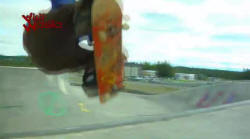
Iditapark, Wasilla’s largest park, is equipped with a skate park, three volleyball courts, four basketball courts, two tennis courts, a BMX course, an outdoor amphitheater, pavilions with BBQ equipment, and Wonderland playground.
Iditapark is the ultimate recreation area. Bike paths wind through the park and duck ponds, benches, restroom facilities, and picnic tables are also free for the public to use.
Nunley Park, in downtown Wasilla, features playground equipment, tennis courts, restroom facilities, benches, and picnic tables.
Reindeer Farm

Come and view several species of Alaska wildlife. The Reindeer Farm, located just south of Palmer, is home to a domesticated herd of reindeer that thoroughly enjoy people.
Not only is the public open to the petting and hand-feeding of the reindeer, but viewings of moose, bison, Sitka black-tailed deer, and Rocky Mountain Elk are also available. Take a tour, and photograph these powerful northern animals interacting with each other at close range.
Here you can experience the Alaska outdoors on an hour long horseback trail ride, or schedule a longer trail ride to get a full sense of the surrounding area. See the majestic Chugach Mountain Range and visit original Matanuska Colony farms nearby.
Take a hike on any of the many trails surrounding the area, including the Butte, or visit the gift shop, open from 10 am to 6 pm daily.
The Butte is located just down the road and features a short hike the whole family can enjoy. From the top, look down over the entire Matanuska-Susitna Valley and see the reindeer from a bird’s eye view. Find yourself surrounded by mountains and gaze down at the mighty Matanuska River.
The Reindeer Farm is a splendid place to spend the day and have a great time.
Performing Arts

Lights, camera, action! Valley Performing Arts brings excitement for the whole family in a variety of plays and musicals performed throughout the year. Drama, tragedy, comedy, children’s plays, and musicals are all offered at some point throughout the season.
Meet the local actors and actresses and see the best of what Wasilla has to offer. Valley Performing Arts has something for everyone.
- Volunteer! Work backstage or help with prop, costume or set design.
- Audition! Everyone is welcome to try-out to be in one of the season plays.
- Attend! For a great community theater experience, come and watch local talent onstage.
Summer camps are offered for kids who wish to explore their creative side and want to learn theater basics.
Valley Performing Arts represents the best of community theater, bringing the public together through the presentation of the arts.
By culturally enhancing the city and spreading the intellectual spirit of the community, VPA continues to grow and prosper by involving all ages on stage, behind the scenes, and in the audience.
